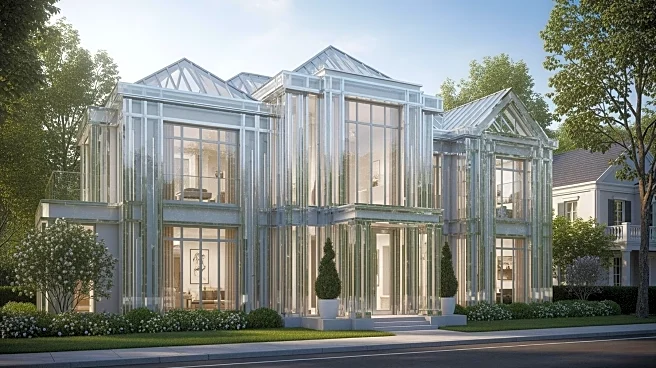What's Happening?
Realtor.com has released its September Luxury Housing Report, which examines the size of homes available for $1 million to $2 million across various U.S. cities. The report reveals significant differences in the amount of space buyers can expect for this
budget depending on the location. Nationally, homes in this price range offer a median of 2,994 square feet. However, cities like Atlanta, Georgia, provide around 4,500 square feet, making it the best-value metro area in the country. In contrast, Urban Honolulu, Hawaii, offers homes averaging just 1,651 square feet for the same price. Similarly, cities in California such as San Jose, Sunnyvale, and Santa Clara offer an average of 1,688 square feet. The report also notes that the national luxury threshold has dropped to $1.24 million, marking a slight decline from previous months.
Why It's Important?
The report underscores the disparities in real estate value across the U.S., highlighting how location significantly impacts the size and type of property buyers can afford. This information is crucial for potential homebuyers and investors looking to maximize their investment in the luxury market. The findings also reflect broader economic trends, such as the decline in the national luxury threshold, which may indicate shifts in market dynamics and consumer preferences. Regions like California's Santa Maria and Santa Barbara continue to lead the luxury market, suggesting strong demand and growth potential in these areas.
What's Next?
As the luxury housing market evolves, potential buyers and investors may need to adjust their strategies based on these findings. The report's insights could influence decisions on where to purchase property, especially for those seeking larger homes or better value for their investment. Additionally, the decline in the national luxury threshold may prompt further analysis and adjustments in pricing strategies by real estate professionals. Stakeholders in the real estate industry will likely continue monitoring these trends to anticipate future market shifts.
Beyond the Headlines
The variability in luxury home sizes across different cities may also reflect broader socio-economic factors, such as population density, local economic conditions, and lifestyle preferences. These factors could influence long-term real estate trends and the development of urban and suburban areas. Understanding these dynamics can provide deeper insights into the cultural and economic landscape of the U.S. housing market.













